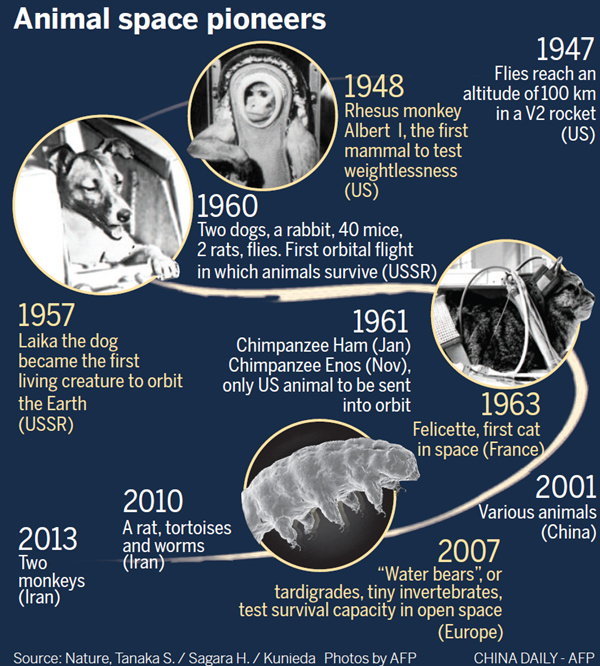Dog star: 60 years of Laika's legacy

MOSCOW - "I asked her to forgive us and I even cried as I stroked her for the last time," said 90-year-old Russian biologist Adilya Kotovskaya, recalling the day she bid farewell to her charge Laika.
The former street dog was about to make history as the first living creature to orbit the earth, blasting off on a one-way journey.
The Soviet Union sent Laika up to space in a satellite on November 3, 1957 - 60 years ago. It followed the first ever Sputnik satellite launch earlier that year.
But things did not go exactly to plan and the dog was only able to survive for a few hours, flying around the Earth nine times.
"Those nine orbits of Earth made Laika the world's first cosmonaut - sacrificed for the sake of the success of future space missions," says Kotovskaya, who remains proud of her pioneering work as a scientist training Laika and other early space animals.
Kotovskaya recalls that before Laika, several dogs had been blasted up into suborbital space for brief periods of a few minutes "to check that it was possible to survive in weightlessness".
"Now it was time to send one into space," said Kotovskaya, who turned 90 in October but still heads a laboratory at Moscow's Institute of Biomedical Problems.
The institute specializes in space science and simulated a flight to Mars in 2010 by making volunteers spend 520 days in isolation.
Laika was a mongrel dog aged around 3 who weighed 6 kilograms. Like all the other candidates for space, she was a female stray found on a Moscow street.
"We chose bitches because they don't have to raise a leg to urinate which means they need less space than the males," Kotovskaya said.
The hope was that Laika would stay alive for eight to 10 days, but instead she died from overheating and dehydration after a few hours as the temperature inside the capsule soared and reached over 40 C due to insufficient insulation from the Sun's rays.
The satellite carrying her remains burned up in the atmosphere five months later, on April 14, 1958, above the Antilles island group.
The first animals to go into space and return alive were a pair of dogs called Belka and Strelka who blasted off in a rocket on August 19, 1960 and returned a day later.
The success of their mission persuaded Soviet authorities to go ahead with the highly risky first space trip by a human, Yury Gagarin, in April 1961.
Agence France-presse









